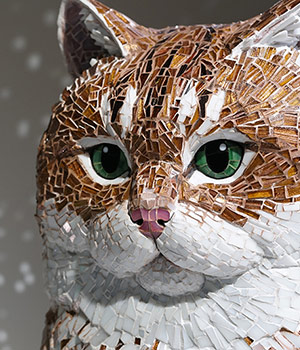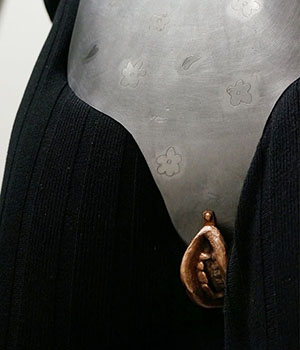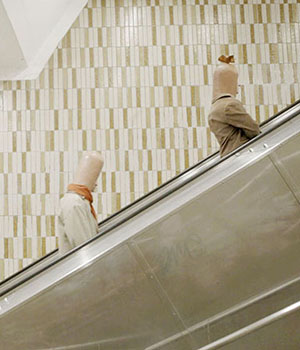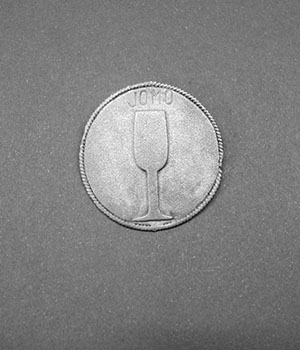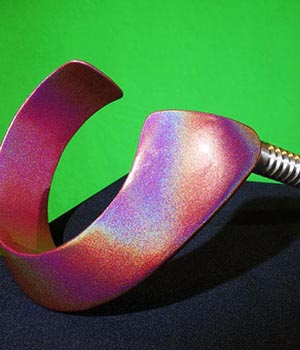Jewellery and Corpus have a long tradition within craft. Their histories coincide with the development of complex material and symbolic systems devised by humans to make sense of one’s place in the world. Jewellery has existed for more than a hundred thousand years and may even be older than spoken language. Researchers studying the earliest examples of jewellery ever found, have described jewellery in terms of the earliest storage of information outside the human brain. “
“Corpus” is the word used in Sweden to describe objects that pertain to metal- and silversmithing, such as hollowware and ritual silverware. Its history also dates back millennia and is contingent on the development of metallurgy and even alchemy.
Jewellery and Corpus have defined manifold experiences of being human on this planet, and continue to do so today, with all the hopes, complexities, and responsibilities that this entails. At the Ädellab (Jewellery and Corpus) programme, students research the possibilities offered by our subjects, by being rooted in them while simultaneously challenging their traditions and their materiality, as well as inherited histories. Students, through their practices, strive to chart and expand the boundaries of a field that is deeply intellectual and in constant evolution. Through making and unreserved experimentation, by weaving together theory and practice, and by investigating methods and specific contexts, the students position themselves with their unique voices, using their chosen subjects to engage with society at large, and to critically probe norms, value systems and ingrained behaviours.
It is in this quest of expanding and challenging our subjects from within, with perspective and intention, that we come to the practices of this year’s graduating students. Through their projects, they have materialised specific narratives and experiences of being human, as they share with us work that investigates jewellery’s potential to question societal norms and expectations from the perspective of introverts; that considers the transformative power of copying, intended as a method capable of leading to novel artistic expression and breakthroughs in material culture; moreover, work that plays across the digital and the physical worlds to question our digital habits and life with screens; work that lets us inhabit the perspective of objects — in particular the box and the jewellery it contains — in order to better understand the intimate relations that are formed between people and things; work that captures the viewer’s gaze with its highly polished surfaces and repetitive, sharply choreographed film-loops, to bring attention to non-sustainable ideals of efficiency and productivity in a society marked by neoliberal forces; and finally, work that looks at jewellery as a tool to spotlight personal experiences of vulnerability, safety, and fear in public spaces after nightfall. We welcome you to visit the visions of this year’s graduates!
Beatrice Brovia, Senior Lecturer in Craft, specialising in Jewellery
Jewellery and Corpus have a long tradition within craft. Their histories coincide with the development of complex material and symbolic systems devised by humans to make sense of one’s place in the world. Jewellery has existed for more than a hundred thousand years and may even be older than spoken language. Researchers studying the earliest examples of jewellery ever found, have described jewellery in terms of the earliest storage of information outside the human brain. “
“Corpus” is the word used in Sweden to describe objects that pertain to metal- and silversmithing, such as hollowware and ritual silverware. Its history also dates back millennia and is contingent on the development of metallurgy and even alchemy.
Jewellery and Corpus have defined manifold experiences of being human on this planet, and continue to do so today, with all the hopes, complexities, and responsibilities that this entails. At the Ädellab (Jewellery and Corpus) programme, students research the possibilities offered by our subjects, by being rooted in them while simultaneously challenging their traditions and their materiality, as well as inherited histories. Students, through their practices, strive to chart and expand the boundaries of a field that is deeply intellectual and in constant evolution. Through making and unreserved experimentation, by weaving together theory and practice, and by investigating methods and specific contexts, the students position themselves with their unique voices, using their chosen subjects to engage with society at large, and to critically probe norms, value systems and ingrained behaviours.
It is in this quest of expanding and challenging our subjects from within, with perspective and intention, that we come to the practices of this year’s graduating students. Through their projects, they have materialised specific narratives and experiences of being human, as they share with us work that investigates jewellery’s potential to question societal norms and expectations from the perspective of introverts; that considers the transformative power of copying, intended as a method capable of leading to novel artistic expression and breakthroughs in material culture; moreover, work that plays across the digital and the physical worlds to question our digital habits and life with screens; work that lets us inhabit the perspective of objects — in particular the box and the jewellery it contains — in order to better understand the intimate relations that are formed between people and things; work that captures the viewer’s gaze with its highly polished surfaces and repetitive, sharply choreographed film-loops, to bring attention to non-sustainable ideals of efficiency and productivity in a society marked by neoliberal forces; and finally, work that looks at jewellery as a tool to spotlight personal experiences of vulnerability, safety, and fear in public spaces after nightfall. We welcome you to visit the visions of this year’s graduates!
Beatrice Brovia, Senior Lecturer in Craft, specialising in Jewellery

